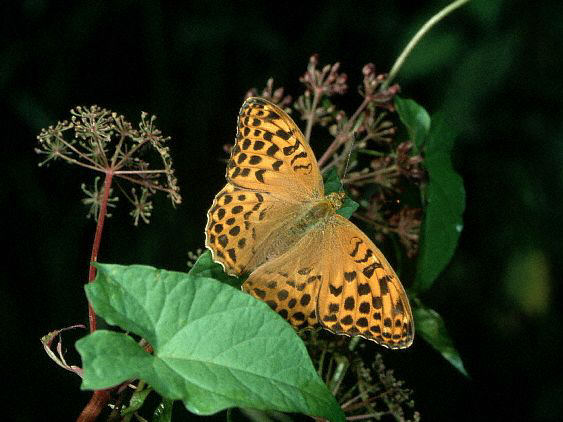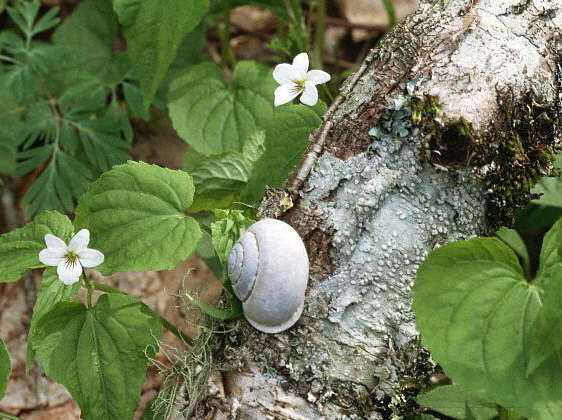 |
| Great
Spangled Fritillary Butterfly |
It is sad to see the end of violets and other spring flowers for the
year, but today, June 10, I had a vivid reminder that summer too has its
beauties: I saw a Great Spangled Fritillary butterfly. You may know some
flowers called Fritillaries, but there is also a group of butterflies
called Fritillaries, and the name for both comes from a Latin word
meaning dice box, as one species of the flowers and most Fritillary
butterflies are spotted. Since you are familiar with problems of odd
forms and colors in violets, I will not mention here similar problems
with butterfly identification. I will only tell you that you can
recognize the typical Fritillary butterfly by its spangles, that is,
although the upper side is orange with dark markings, the under side of
the wing, especially the hind wing, has big silver spots that you can
see when the butterfly is in flight or, at rest with its wings up. They
are fast flyers, and the same color as a Monarch on top although the
dark markings are splotches rather than lines and they are a little
smaller. The wing shape is more rounded, and when you see those spangles
you know it's not a Monarch. Various Fritillary species can be seen
across the U.S. from June through August, and once you have recognized a
Fritillary you will realize how easy it is to know them by their silver
spots.
Now, why am I going on about butterflies in the Violet Gazette? It is
because the violet is the food plant for Fritillary butterflies. The
adult butterfly takes nectar from milkweed, coneflowers, thistles and
many other things, but the eggs of Fritillaries are laid on violets and
the larvae feed on the leaves. The eggs are laid at the end of summer;
the tiny larvae hatch out and spend the winter under the leaf litter and
begin to feed in spring when the violet leaves come back. The larvae are
very hairy, spiny, black or dark brown caterpillars, some with orange
stripes at the base of the spines. The caterpillars feed only at night
on the lower side of the leaves and hide during the day on the ground so
they are not often seen, therefore, if something is chewing on your
violets, it might not be bad slugs but good Fritillary caterpillars!
When the caterpillar is ready to pupate, it drops off the violet plant
and attaches the chrysalis to a rock or log or piece of bark nearby. You
may find it difficult to locate and identify violets, but think of this
little butterfly who is not much bigger than a violet leaf, and has
never seen a violet but who can unerringly find one to lay her eggs on.
The Audubon Society Field Guide to North American Butterflies (p. 552),
describes an even more remarkable feat:.
 |
| Land
Snail With Violets |
"In the Colorado foothills during August and September, females lay
eggs under mountain mahogany bushes and other places where violets have
long since dried up and will not reappear until the next year. The
females may smell the violets' dormant roots."
When rudely asked about your "weeds" explain that what you
have is a "butterfly garden," and even people shocked at the
idea of violets in the lawn might be converted. Most butterfly gardens
concentrate on large, colorful nectar plants, however, without food
plants for the caterpillars there can be no butterflies. Most Fritillary
species are reasonably common, but the largest and most beautiful of
all, the Regal Fritillary, is endangered and almost extinct in some
parts of its range, with only two populations left in existence east of
Illinois.
So plant those violets, spread those violets! You will be adding a
double measure of beauty to the world, first with the violets and then
again with the butterflies.
© 2000 Elizabeth Scott
For The American Violet Society
All Rights Reserved
|